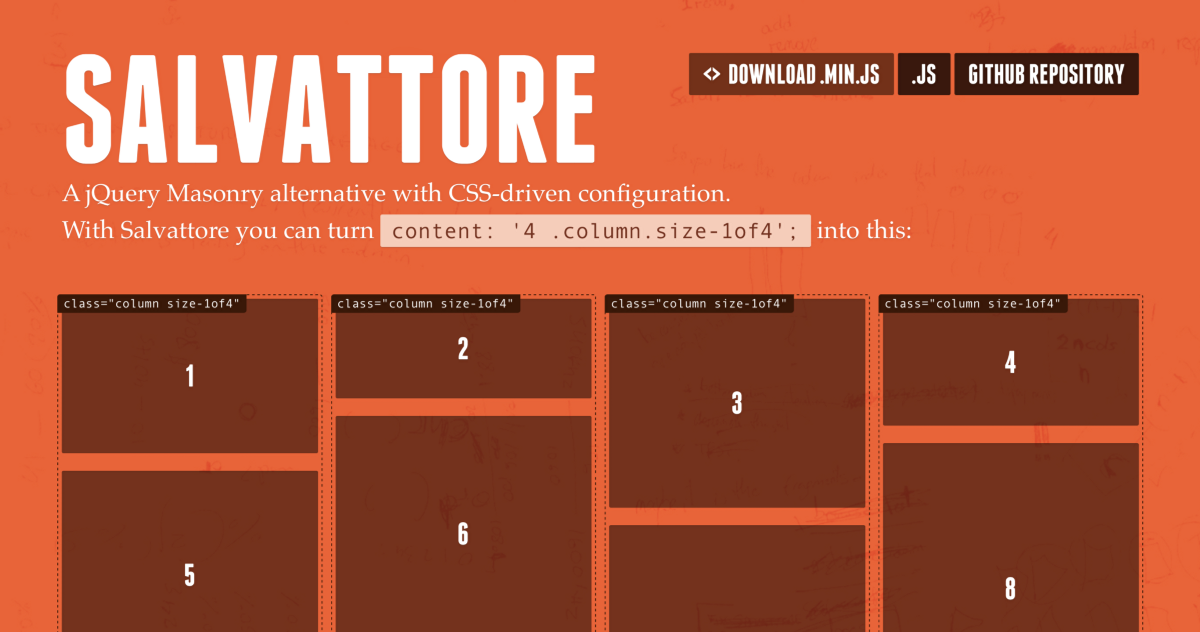My Popular GitHub Repo I Didn’t Really Code

In less than three years, my open source project Salvattore is helping more than 2K web designers and developers create multi-column layouts like Pinterest. It is not the first tool to accomplish this, nor is really my project. I simply had an idea for an algorithm that I couldn’t code myself (at the time) and I asked for help to my programmer friend Giorgio. I’m glad I did. Not only because I unintentionally learned so much about marketing but also the fact that many websites are using it and we are contributing to the web community.
Without going into much detail, Salvattore’s key difference is the control it gives you with your layout by only modifying the structure of your HTML document, leaving the CSS up to you. The best part of it is that you can configure it in your stylesheets and it plays nicely with media queries.

Getting the project out there is what seemed almost impossible to me considering there is already a very popular solution out there: Masonry.
Before getting its name, Salvattore was known between me and Giorgio as data-columns, since that’s the syntax used in the configuration. It wasn’t a bad name, but I happened to have a spare domain name I wasn’t using: salvattore.com. After renaming, the next step was to choose a good tagline that would make Salvattore easy to “sell”:
A jQuery Masonry alternative with CSS-driven configuration.
Nothing fancy, but it describes the project perfectly and the words used make up good keywords for Google: jQuery, masonry, alternative, CSS. Even though Salvattore isn’t a jQuery plugin, people looking for such would still arrive at the site. And most importantly, people looking for a Masonry alternative. As you can see, Salvattore is the first result!
To get traffic, I posted the link three times in 2013 on Designer News which made it gain some stars on GitHub (about 200). What really made it popular was simply the word of mouth. To that end, I looked at posts on Stack Overflow in which people were having trouble with Masonry and I suggested they tried Salvattore.
After that, recommendations on Twitter, a Tuts+ tutorial and even a video mention from Treehouse helped the word be spread. Knowing that people were using this, I asked them on the site to submit their websites and this is the result (although there are more posted on GitHub):

If I had to recommend anything, it would be to take advantage of the open source nature of your project and let others help you. Giorgio and I were struggling to keep the project up to date and maintaining the repository. Bugs not being fixed, pull requests not being merged, it sucked. That’s why earlier last year I decided to make one of our major contributors, Marius, actual collaborators so that they could have more control of what happens with the source code.
Marius has done a great job keeping up with the issues users were posting, as well as updating the site and the source code. I don’t know how much longer the project will live but it has been one hell of an experience.